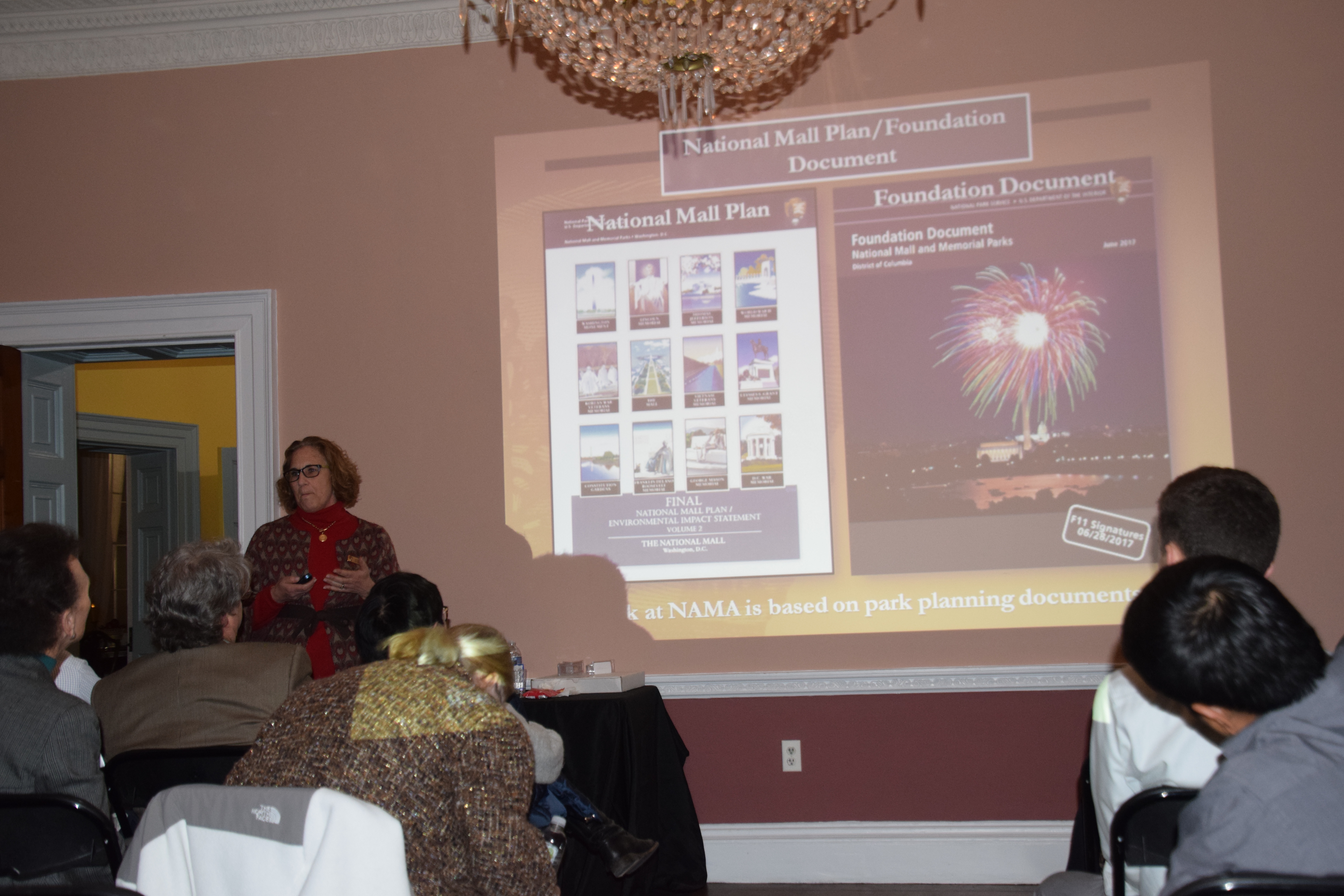Audrey Tepper, a Historic Architect with the National Park Service at the National Mall and Memorial Parks, and Tim Vandewalle, Superintendent at the Christman Company, both discussed their current and ongoing preservation efforts at some of our Nation's significant monuments at the Octagon House to a sold-out audience. Both presenters discussed the innovative technologies developed to appropriately restore and repair historic materials at National Monuments that spawned an informative Q&A discussion afterwards.


Our major takeaways from the presentations are as follows:
1. Increasing annual visitation numbers to our National Monuments are putting stress on our current historic resources. Aging visitor spaces need to be upgraded and many monuments are in need of restoration.
2. The aggressive bio-film found on the Thomas Jefferson Memorial has a unique biology, even different from a similar bio-film found across the Potomac at Arlington Cemetery.
3. Laser-cleaning was determined to be the only long-lasting solution for keeping the aggressive bio-film from growing back.
4. There are 4 methods of repairing cracked cast-iron
1. Heat (1000-1500 degrees Fahrenheit and is only successful when employed at corners of cast-iron)
2. Mechanical
3. Chemical
4. In-kind Replacement
5. Lock-n-Stitch (a mechanical technique developed by Gary Reed) was chosen for the restoration of the Capitol Dome because it preserved the most material in-place among other significant reasons including limited heating processes to the already delicate historic cast iron.
6. Lock-n-Stitch developed a unique mechanical fastener for use on the Capitol Dome, which had a special profile to provide added strength to the low thread strength of in-place historic cast-iron.
7. Selective demolition and fit-up prior to commencement of cast-iron work is critical to the success of repairs.
8. Employ "magnetic particle inspection" after repairs have been completed to ensure no new cracks or discontinuities were formed.
9. Previous mid-century repairs to the Capitol Dome included heat-based repairs, which are irreversible and cannot be reworked or reheated.
Thanks to Kara Johnston for compiling these pointers and thank you to our presenters, we truly enjoyed learning about your experiences with our National Monuments!